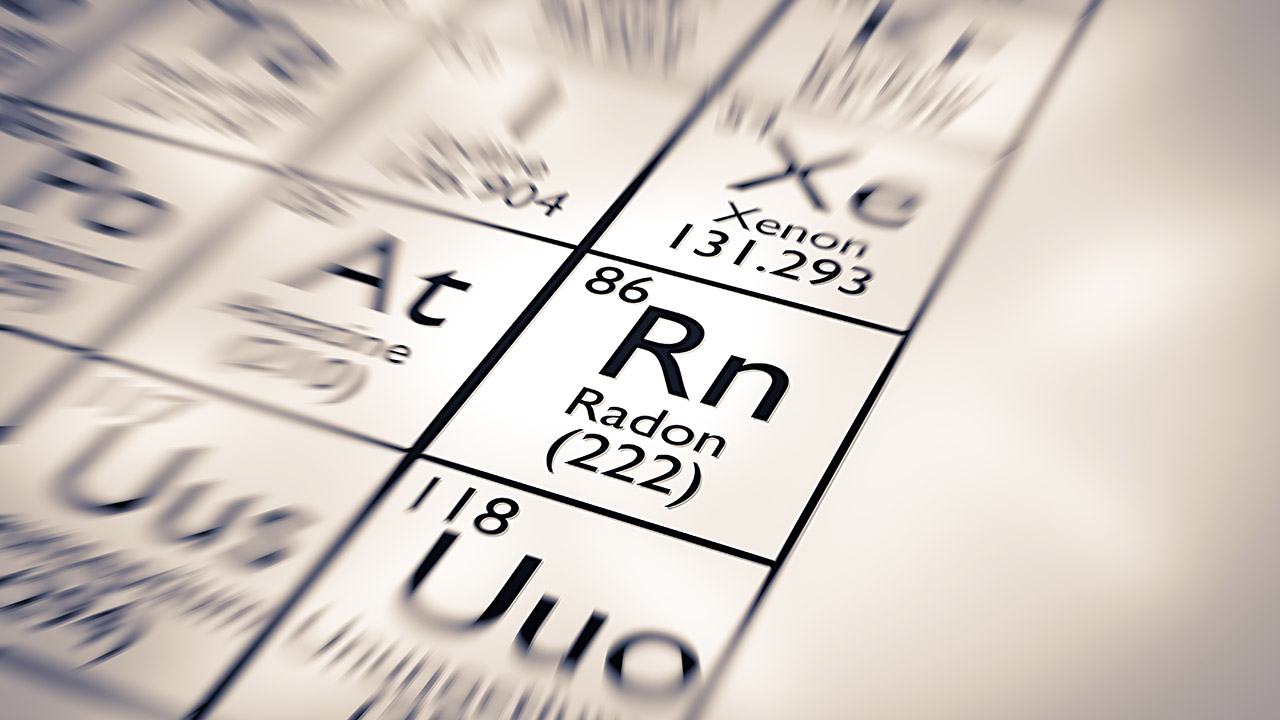Why You Need to Check Your Home For Radon, the Silent Killer
Just about every homeowner knows the danger of carbon monoxide and how it can build up in the home without offering any signs of its presence. It’s colorless and odorless, and can be deadly. That’s why it’s necessary to have carbon monoxide detectors installed in a home in order to help detect its presence and take action to eradicate it.
But another “silent killer” that doesn’t always get the same amount of exposure is radon. Yet it can also be present in the home without homeowners knowing it’s there because it is also odorless, tasteless, and colorless, and can pose a deadly threat to all occupants of a home.

What is Radon?
Radon is a radioactive gas that comes from the decay of uranium that’s naturally present in just about every type of soil and rock. Since it is a gas, radon can easily travel up to the air from the ground, and can even enter the home through cracks in the foundation where it then gets trapped and becomes concentrated.
While some areas in California are more susceptible to radon compared to others, it can still be present in both old and new homes alike, regardless of the particular region. Unless it’s tested for, it is impossible to know if your home is filled with radon or not.
Health Risks Associated With Radon
The reason why radon is so dangerous is because prolonged exposure to elevated levels of the gas can lead to an increased risk of developing lung cancer. While not everyone who is exposed to radon will develop lung cancer, it certainly increases the risk. According to the U.S. EPA and National Cancer Institute, the number of yearly lung cancer deaths among Americans that are associated with radon exposure is between 7,000 and 30,000.
On average, the concentration of radon in homes across the country is approximately 1.3 picocuries per liter (pCi/L). Exposure to radon concentrations over 4 pCi/L is considered dangerous. Testing the indoor air is the only way to know if the radon is at a potentially lethal level. The good news is that testing for this gas is easy and affordable. It’s recommended that actions be taken if the radon level in a home measures 4 pCi/L or more.
The California Department of Public Health (CDPH) recommends that all homes should be tested for radon, regardless of the area, just to be safe.
Testing For Radon
If you’re buying a home, you can have your home inspector conduct the test during the inspection. Otherwise, you can either hire a professional radon test service, or do it yourself using a radon testing kit that is available at home improvement stores. After the allotted time has passed, the detector will then need to be sent to a lab to be analyzed.
It may be necessary to test in all levels of your home if you have a forced air HVAC system, as this gas can travel more liberally throughout the home. As such, you may find the same radon levels on each level.
All windows and doors need to be kept closed (except for general use of exterior doors to enter and exit your home) for at least 12 hours before the test is done and during the actual testing process. If you don’t typically use your air exchanger, keep it turned off during the test. Your HAVC systems can operate as usual.
The detector is placed away from sources of moving air, and shouldn’t be used during windy or wet weather, as this can produce inaccurate results.
The Next Steps
If the level of radon in your home is far less than 4 pCi/L, great. However, if it’s approaching 4 pCi/L or has even exceeded that level, it’s time to take action. There are radon mitigation systems that can help rectify the situation in your home.
One method of reducing the level of radon in your home is through active soil depressurization, which gathers up the radon that is under your home before it’s able to get in. This system sucks out the gas from underneath and then releases it outside, far from any openings to your home.
The Bottom Line
Whether you’re buying, selling, renovating, or are just planning to stay put, you should have your home tested for radon. Even if the average data in the area you live in shows low levels of radon, don’t take a chance. Radon levels can be different from one house to another, even on the same street. It’s a quick and inexpensive test, and might even save your life and that of your family.



